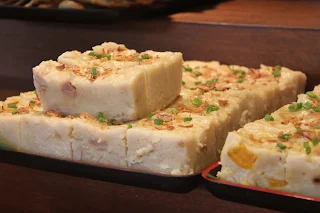This simple but beautiful idea - of having freshly made egg noodles lightly cooked and then dry stirred with
a soy sauce to be ultimately garnished with vegetables and thin slices of Cantonese-styled char siew pork - is what I have grown up with. Wanton dumplings (with dabs of pork or prawn mince inside) are best served separately in small soup bowls. (above).
Introduced to me in childhood as a breakfast snack, or whenever to mitigate hunger pangs at an ever open street stall, the standards of this wanton mee are determined by the smoothness of the noodles,
the quality of the black soy sauce used, the deftness as how the meat wantons have been made and the bite rating of the char siew - see the picture below.
There are different variations of wanton mee, but the best version I like is from Kuala Lumpur, Malaysia - and which I rediscovered on a recent trip to Johor Baru. In a shop with a front of barbecued roasts hanging outside Jalan Wong Ah Fook in JB Square, the kopitiam (coffee shop) setting inside is unassuming, but the wanton mee they served is impressive. It was better than the versions I have tried in Sydney, Penang, Hong Kong and Bangkok.
An alternative garnishing is the roast duck, sliced to bite sizes and often served with cut cucumbers. (above).
In addition, service in this Johor Baru shop was quick - I would return!






































